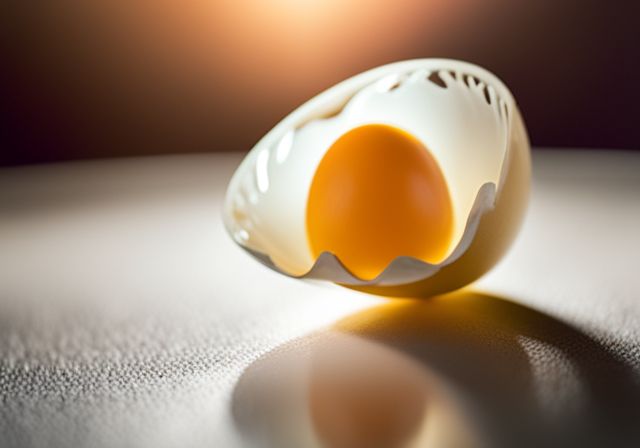Ovulation Cycle FAQs: Navigating your ovulation cycle can sometimes feel like trying to decode a mysterious language. Believe me, understanding this process wasn’t an overnight journey for me either. Through dedicated research, I’ve pieced together insights that illuminate the twists and turns of this complex path.
This article aims to shed light on all those lingering questions about ovulation, from how to effectively track it to grasping its significance in fertility and overall health. Are you ready for some clarity? Let’s dive in.
Key Takeaways
- Ovulation is when a woman’s ovary releases an egg, usually happening about halfway through her menstrual cycle.
- You can track ovulation with signs like pain on one side of your belly, changes in discharge, or using at-home urine tests to find the best time for conception.
- Lifestyle changes and stopping birth control can affect when you ovulate. Eating well and reducing stress help keep your cycle regular.
- After stopping birth control, it might take some time for your body to find its natural rhythm again. Using tools like ovulation predictor kits can help.
- If you have sex around the time of ovulation, there’s a high chance of getting pregnant since the egg is ready for fertilization.
Understanding Ovulation

Ovulation is when a woman’s ovary releases an egg, making it available for fertilization. It usually occurs around the middle of the menstrual cycle, roughly 14 days before her next period.
What is ovulation?
Ovulation is when a mature egg makes its grand exit from the ovary and starts its journey down the fallopian tube. Think of it as the egg’s big debut, ready to meet any sperm that happens to be nearby.
This moment kicks off thanks to a hormone called Luteinizing Hormone which acts like a starting gun, signaling that it’s go time for the egg.
Now here’s where things get interesting. If you’re keeping an eye on your menstrual cycle, aiming somewhere between 24-35 days is a good sign that everything’s working as it should.
It tells us ovulation is part of your monthly routine. You can even use those handy at-home urine tests or chat with your doctor to pinpoint exactly when this ovulatory phase is happening for you.
With factors like stress or body weight sometimes throwing off our internal rhythm, knowing when you’re ovulating becomes even more crucial if you’re thinking about fertility and overall wellness.
When does ovulation occur?
Ovulation plays a key role in fertility and understanding your menstrual cycle. It’s when one of your ovaries releases an egg, ready for fertilization.
- Typically, ovulation happens about halfway through your cycle. If you have a 28-day cycle, this means around day 14.
- Your body prepares for this event with hormonal changes. A surge in luteinizing hormone (LH) tells your ovary to release the egg.
- Ovulation doesn’t stick to a strict schedule. Stress, illness, or changes in weight can shift its timing.
- You might feel some signs—like a slight pain on one side of your belly or increased discharge—that hint at ovulation.
- An at – home urine test or visiting a doctor can confirm if you’re ovulating. They check for that LH surge I mentioned.
- Ovulation is quick—lasting just about 24 hours—but sperm hanging around for up to 5 days increases the window for possible conception.
Don’t worry if tracking seems tough at first—it gets easier with practice and attention to your body’s cues. Now let’s dive into how to tell if you’re ovulating…
Navigating Ovulation After Stopping Birth Control
Stopping birth control throws a curveball at your body. It’s like hitting the restart button on your fertility cycle. Suddenly, your body’s back in charge of its natural rhythms, figuring out when to kick ovulation into gear.
This transition might feel like fumbling in the dark for a light switch – it takes time to find it.
Here’s the scoop – once you stop birth control, tracking your menstrual cycle becomes key. Think of it as detective work; you’re keeping an eye out for clues that show when ovulation is near.
Tools like ovulation predictor kits and basal body temperature charting come handy here. They’re like breadcrumbs leading you back to understanding your cycle’s rhythm post-birth control pause.
And remember, spotting signs of ovulation doesn’t just help with pregnancy planning—it can also clue you in on what’s happening health-wise down there.
Common Questions About Ovulation

How can you detect ovulation? Can pregnancy occur after ovulation? How does lifestyle affect ovulation?
How to detect ovulation?
To detect ovulation, track signs such as cervical fluid and a rise in basal body temperature. Use ovulation tests to detect the rise in fertility hormones just before an egg is released. Confirm ovulation using an at-home urine ovulation predictor kit (OPK) or by testing hormone levels with a doctor. Remember, detecting ovulation is essential for understanding fertility and planning for pregnancy.
Can you get pregnant after ovulation?
Yes, you can get pregnant after ovulation. After ovulation, the egg is viable for about 12-24 hours. However, sperm can survive in the female reproductive system for up to five days.
So, if intercourse happens during this time frame before or after ovulation, there is a chance of fertilization and pregnancy occurring.
Furthermore, it’s important to note that menstrual cycles vary from person to person and tracking ovulation can help identify the most fertile window for conception.
Impact of lifestyle on ovulation
Lifestyle impacts ovulation. Stress, smoking, and too much alcohol can disrupt the menstrual cycle. Being overweight or underweight affects hormone levels and can lead to irregular ovulation.
Balanced diet, regular exercise, and enough sleep support healthy ovulation.
Tracking your menstrual cycle is essential for understanding ovulation patterns. This knowledge allows you to optimize lifestyle factors that influence ovulation for better overall health and fertility prospects.
Ovulation and Pregnancy
Understanding the connection between ovulation and pregnancy helps to know when conception is most likely to occur. Discover more about this link and how it can impact fertility. If you’re interested in learning more, read on!
Chances of getting pregnant on ovulation day
On ovulation day, the chance of getting pregnant is at its highest. This is your most fertile time during the menstrual cycle. If a woman’s egg meets sperm during this time, fertilization can occur, leading to pregnancy.
It’s vital to understand and monitor ovulation if pregnancy isn’t desired or if planning for conception.
Understanding your body’s natural cycle helps in recognizing signs of ovulation and planning accordingly. Whether you are trying to avoid pregnancy or looking to conceive, knowing your fertile window can be crucial.
Tracking methods such as basal body temperature charting and ovulation predictor kits can help in identifying this optimal period for conception.
Pregnancy symptoms soon after ovulation
After ovulation, some women experience symptoms that are similar to early pregnancy signs. This is because hormonal fluctuations can cause breast tenderness, changes in the menstrual cycle, and even ovulation pain.
These symptoms may occur due to increased estrogen levels after ovulation. However, it’s important to note that these symptoms are not confirmatory of pregnancy. Lack of these signs does not necessarily mean you’re not pregnant either – the most reliable way to confirm a pregnancy is through a test.
Ovulation pain or mittelschmerz typically occurs around 14 days before your next period. It’s lower abdominal pain associated with ovulation and is one of the signs indicating an active reproductive system.
Conclusion
Now you have the answers to your questions about ovulation. Understanding ovulation is important not just for fertility but for overall health. By tracking your menstrual cycle and symptoms, you can prepare yourself better.
Ovulation tests can help detect the rise in fertility hormones crucial before an egg is released. Remember, understanding ovulation will lead to advocating for your health effectively.
For more detailed information on managing your cycle post-contraceptive, visit our comprehensive guide at navigating ovulation after stopping birth control.
FAQs
1. What are the signs of ovulation?
Signs of ovulation include changes in cervical mucus, a slight increase in basal body temperature, and mild pelvic or abdominal pain.
2. How long does ovulation last?
Ovulation typically lasts for about 12-24 hours.
3. Can I get pregnant during my period?
Yes, it is possible to get pregnant if you have a short menstrual cycle and ovulate shortly after your period ends.
4. What can affect my ovulation cycle?
Factors such as stress, illness, excessive exercise, and hormonal imbalances can affect your ovulation cycle.
5. When is the best time to try to conceive during my ovulation cycle?
The best time to try to conceive is around the time of ovulation when an egg is released from the ovaries.
